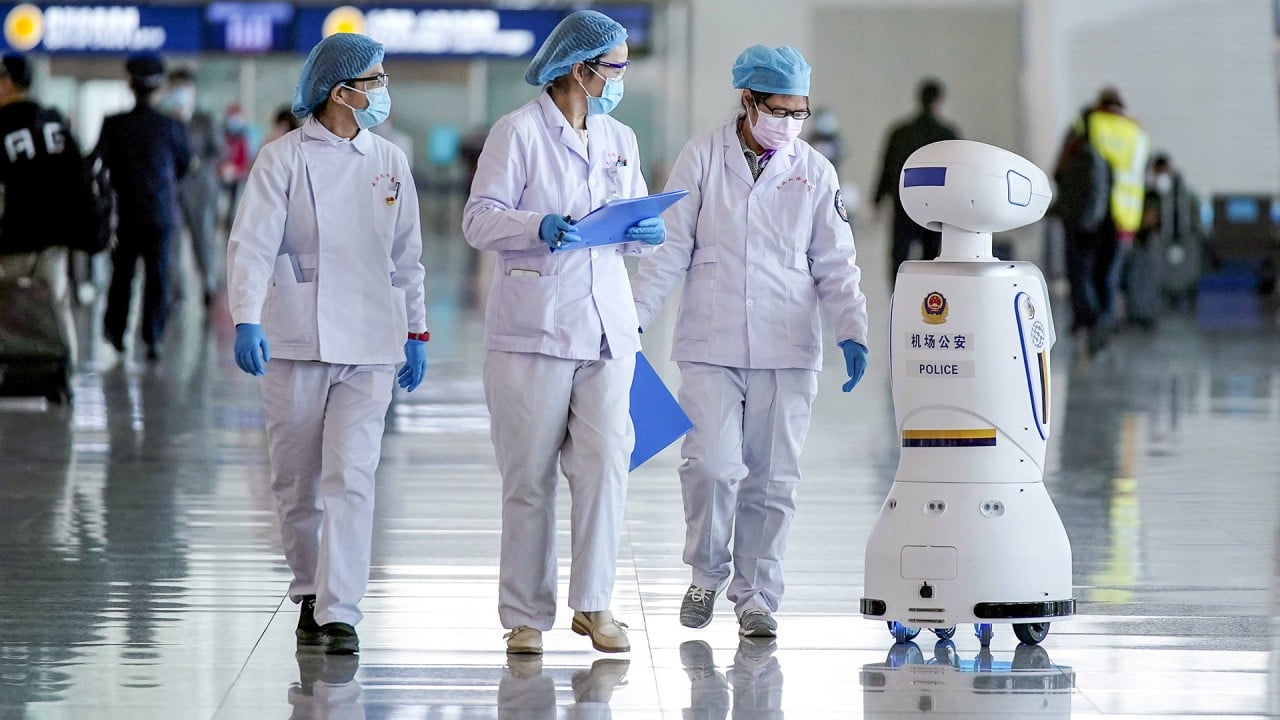
Coronavirus has sped up the digital revolution, with China leading the way
- From live-streaming sales to building lasting business relationships online to adopting AI in manufacturing, Chinese companies have risen to the challenge of the pandemic and offer the rest of the world a glimpse of the future
It was an unusual but uplifting moment during the height of the months-long nationwide lockdown amid Covid-19.
The epidemic has taken a heavy toll on the Chinese economy – gross domestic product contracted 1.6 per cent year on year in the first half of 2020 – and businesses continue to struggle. But while Covid-19 poses unprecedented challenges, it has also created powerful incentives to do things differently. Like other major crises, the pandemic has challenged old assumptions and shattered long-established routines.
In China, where the shock of the pandemic was first felt, lockdowns and social distancing have accelerated change at the technology frontier.

04:33
Why live streaming is becoming China’s most-profitable form of electronic media
According to China’s Ministry of Commerce, there were more than 4 million live-streaming sessions in the first quarter of 2020. More than eight times as many merchants were using Taobao Live, a live-streaming arm of China’s e-commerce giant, in February compared to January.
Industry research predicts that retail sales via China’s live-streaming platforms will reach about US$130 billion this year, with potentially almost half of China’s population becoming live-streaming customers.
Under the pressure of Covid-19, it’s not just sales channels that have accelerated their adoption of digital technology, but also business operations and engagement models. In a country where face-to-face meetings have traditionally played a key role in building business relationships, networking has also largely moved online. One popular Chinese enterprise communication platform has seen its monthly active users rise from about 65 million at the end of 2019 to roughly 177 million in March.

But it is not just internet-based technology that has seen its star rise during the Covid-19 gloom: industry is accelerating the process of hi-tech automation. Wuhan, once the epicentre of the pandemic, is also one of China’s industrial hubs, home to manufacturers such as Xiaomi and Lenovo.
The latter, for example, has used 5G, internet of things and robotics to enable intelligent manufacturing in its Wuhan plant in the face of the labour shortage during the lockdown. High-precision intelligent robots, coupled with automated processes, have allowed the company to resume production despite the limitations on its human workforce.
Short video platform Kuaishou aims to incubate 100,000 businesses in a year
The government is keen to encourage this trend. For years it has used infrastructure spending to stimulate the economy during slowdowns, but this round of stimulus has seen an important shift in emphasis. In March, Beijing launched a “New Infrastructure” campaign, with policies designed to encourage investments into sectors including 5G networks, industrial internet, data centres, artificial intelligence, ultra-high voltage and new-energy vehicle charging stations.

03:07
China’s hi-tech industries capitalise on Covid-19 pandemic health care needs
The Chinese language uses the same word to describe the concepts of crisis and opportunity. Every crisis, while deeply unsettling, also contains the seeds of opportunity, a truth that is easy to overlook when the coronavirus pandemic has plunged us all into a global health crisis and an economic downturn. The full transformational potential of the digital revolution is only just being felt, and Covid-19 is breaking down the last barriers to full adoption.
Mark Wang is president and chief executive officer of HSBC China

